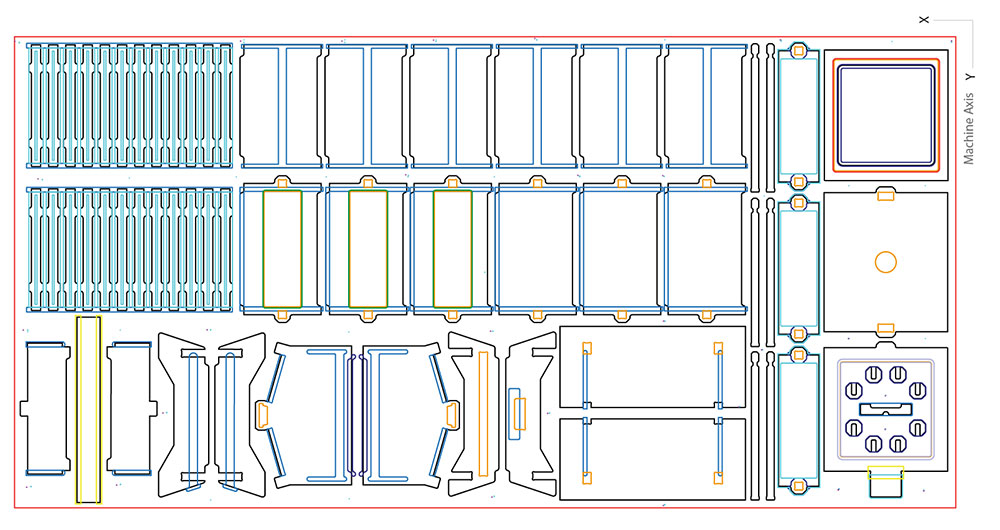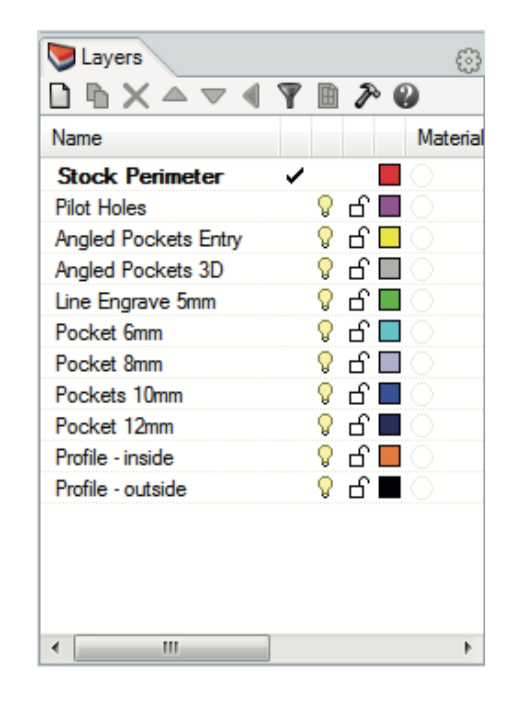How to Make Yourself

CNC Milling
After downloading the Barcelona Warré files, you will need to source a CNC router / workshop.
OSBH hives are made using CNC router technology: a computer-controlled cutting machine that is often used to manufacture custom cabinetry. They are available in most metropolitan areas. Check out these links to locate one close to you (alternatively, you can order a pre-made hive from our website).
* Ensure the workshop you choose has a CNC machine capable of cutting 4' x 8' or 1220mm x 2440mm sheets of material.
Source | Discription | Source Rating |
|---|---|---|
Find professional CNC workshops | 5/5 | |
Find small CNC businesses | 4/5 | |
Find Fab Labs where you can make yourself | 4/5 | |
Find makerspaces and some workshops | 2/5 |
The drawing above shows the Geometry and Cut Strategies that a machine operator will need to use with their own CAM software. To help in the creation of the machine ‘tool paths’ we have split the strategies into colour coded layers and named them according to the strategy required. See the ‘Nesting’ and ‘Cut Strategy’ files.

Materials
CHOOSING the MATERIAL
Our hives have been designed to cut from one standard size board of 1220mm x 2440mm or 4 x 8 feet. You can choose from a variety of sheet materials, including plywood, cork, recycled plastic and even mycelium.
If you choose to use plywood, it is important to select a supply that is free from formaldehyde and harvested from responsibly managed forests. Internationally you can look for the ‘Forestry Stewardship Council’ FSC certification standard. This means that the forest the wood has come from have been managed responsibly. If using plywood in the United States, look for wood that meets the CARB Phase 2 standard, which is the highest rating for nontoxic plywood in the nation.
Treating the Wood
If you choose wood materials, you may wish to treat the wood with a non-toxic sealant to protect it against the weather. Plywood is not as weather resistant as hardwoods, so it is necessary to apply a varnish that will protect the exterior of your hive without disrupting the bees. We have used Linseed oil with a good deal of success. It is common practise for beekeepers to mix melted beeswax into the linseed oil before applying it.
When treating the wood, make sure you leave ample time for it to dry fully before installing the bee colony. There should be no strong smells or residual vapours being released. It is not recommended to paint or treat the inside of the hive.
Note
We have created three file types for 19mm, 20mm and 21mm thickness boards. It is common for wood boards to have slight variations, so be careful to measure your wood before selecting the files. In these design every millimetre counts!
Updated 8 months ago
